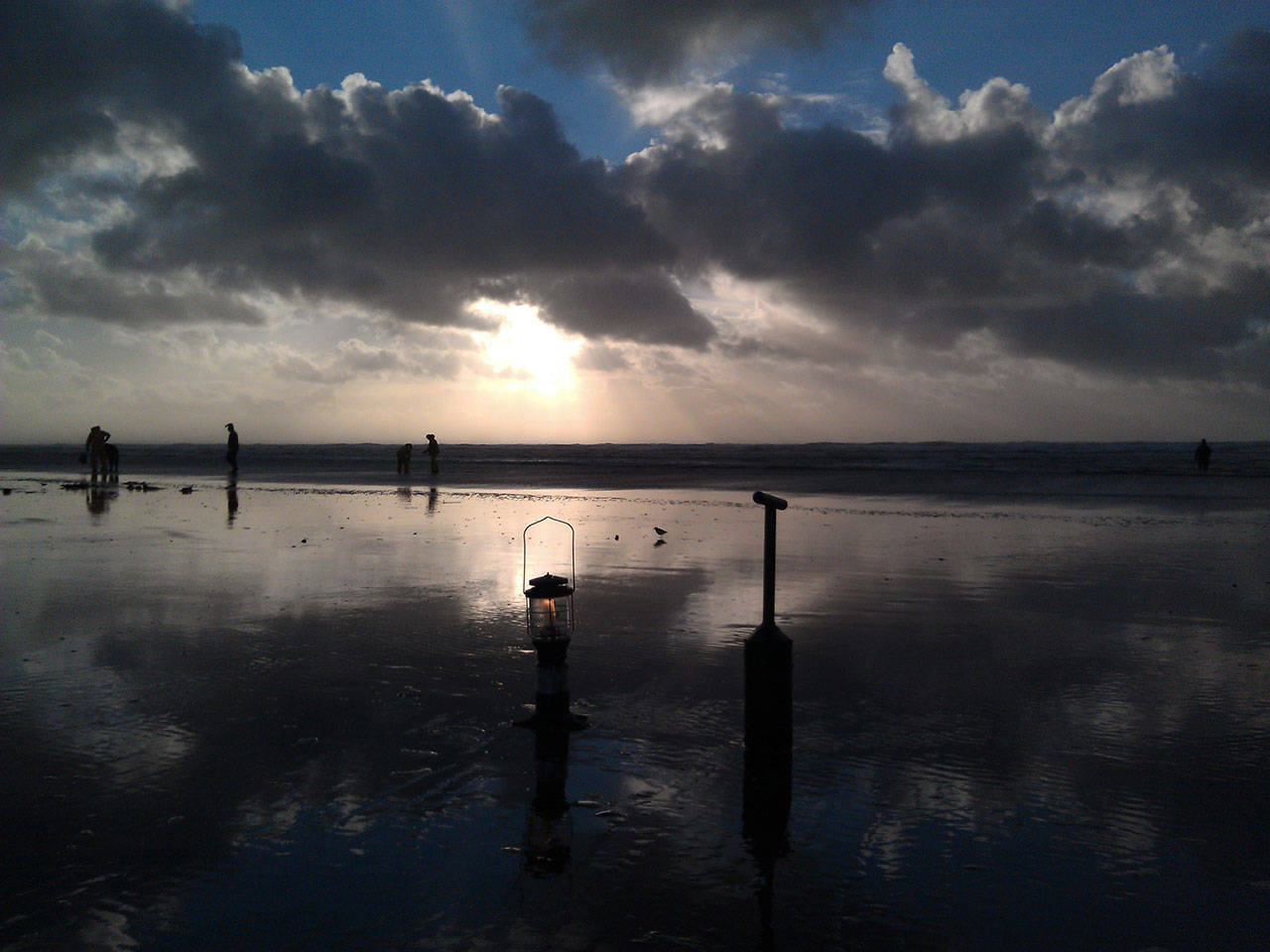Millions of razor clams await diggers for the upcoming fall/winter/spring harvest season.
That’s the good news. The unfortunate news is Kalaloch, the northern-most ocean beach to sustain large populations of razor clams, won’t open in 2021-2022 due to a lack of sizeable clams.
It appears that the Kalaloch ecosystem is still having trouble getting from recruit-size to harvestable size — a problem which impacted the last dig held there in February 2019.
State Department of Fish and Wildlife Coastal Shellfish Manager Dan Ayres told the Outdoor Line’s Mark Yuasa about the burgeoning clam populations on the other ocean beaches.
The number of recruit-size clams estimated at Long Beach is 21.6 million with a total allowable catch of 8.6 million this season, far outpacing the 25-year historical average of 7.9 million razors but down a bit from last year, which saw 24.8 million and 9.9 million, respectively.
Record-sized numbers of clams were found at Twin Harbors and Copalis as well, with 8.5 million recruits at Twin Harbors and a TAC of 3.4 million.
Last year saw 5.2 million recruits with a TAC of 1.8 million and the overall record of 6.6 million recruit-size razors occurred in 2014-2015.
At Copalis, the recruit-size clam total is 16.5 million (11.8 million last season) with a TAC of 6.6 million (recreational harvesters are allowed a share of 3.3 million) up from 4.7 million in 2020-2021.
Mocrocks isn’t breaking records in terms of total population, seeing a decline in recruit-sized clams from 11.6 million in 2020-2021 to 9.7 million this season. Recreational harvesters are allowed 2 million of the beaches’ 3.9 million TAC, which is a record.
Records could fall at Mocrocks in the coming years as Ayres said pre-recruit clam totals were pegged at 48.2 million in summer assessments.
Expect a full release on the season from Fish and Wildlife in the coming weeks.
Canal kings booming
Quilcene’s Ward Norden has been keeping a watchful eye on Hood Canal chinook fishing.
“If you have been watching the chinook fishing success rates down around Hoodsport, they are extraordinary,” Norden said. “I have never seen anything like it. Clearly, this late in the season the fish are ugly and of questionable quality, but it is a testament to how far wrong the experts at Fish and Wildlife were at in predicting this run.”
Norden said he saw sign of what was to come when he watched the size of salmon weighed in at the last Murray Salmon Derby, the Geoduck Derby Tavern at the end of blackmouth season in March 2019.
He blasted state biologists for ignoring what’s really going on in the ecosystem, particularly the mega-nutrient rich currents that flowed into Puget Sound and inland waters in 2019 and 2020.
________
Sports reporter Michael Carman can be contacted at 360-406-0674 or mcarman@peninsuladaily news.com.

